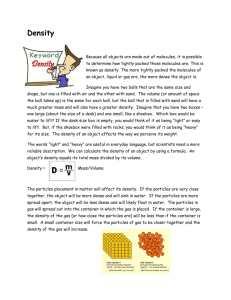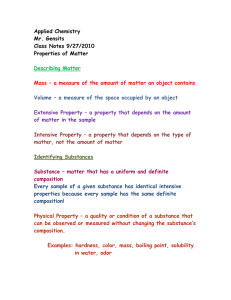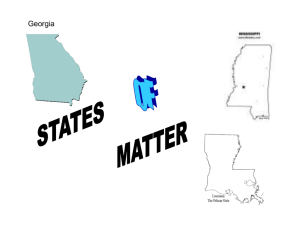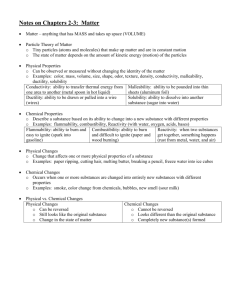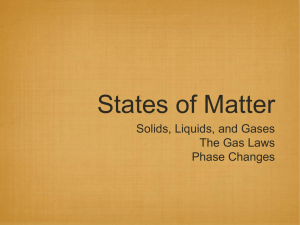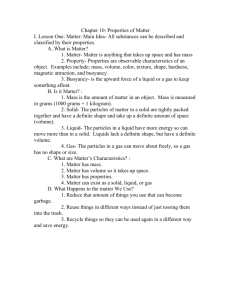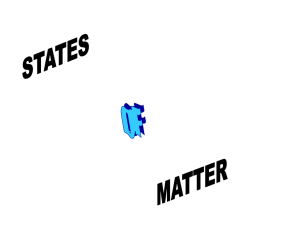Phase Changes
advertisement
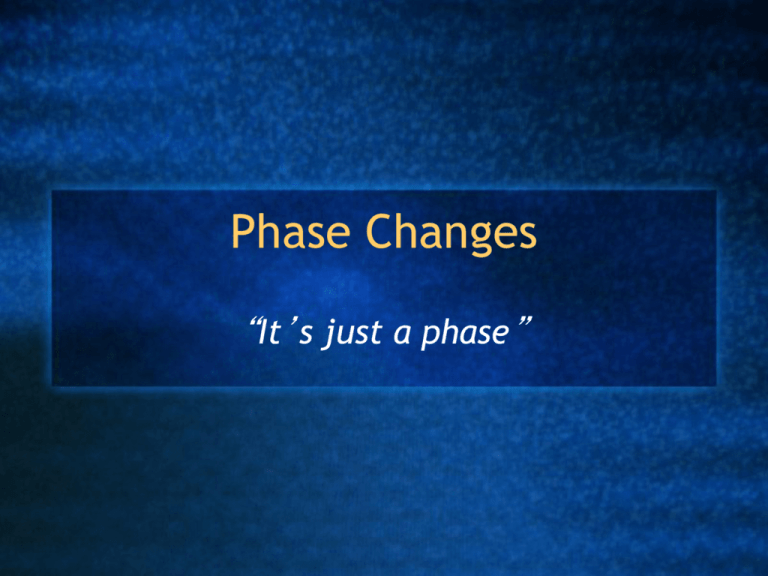
Phase Changes “It’s just a phase” States of Matter Solid, liquid and gas (plasma) Changes between states are called “phase changes” Caused by a change of heat or pressure HEAT and TEMPERATURE are not the same thing Temperature Measures the average kinetic energy of the particles in a substance. Is measured in Celsius or Kelvin. Kinetic energy is directly related to the speed of the molecules. The faster the particles/molecules are moving the higher the temperature. Heat Heat is a measure of energy (Joules). HEAT and TEMPERATURE are not the same thing. Ex. A cold Lake Superior has more heat energy than a boiling pot of water. For our class, higher temperature means more heat. STATES OF MATTER Solids Molecules are tightly packed together. High potential energy – more bonds. Particles vibrate in place. Very Dense. Not easily compressed. Definite shape and volume. Liquids Particles are not so tightly packed (liquids flow and can be poured). Medium potential energy. Definite volume Indefinite shape (takes shape of container) Gases Particles spread out as the container will allow. High kinetic energy, particles are moving very quickly Can be compressed Indefinite volume and indefinite shape Phase Changes When a substance changes states. Requires the input or the removal of energy or change in pressure. During a phase change the temperature does not change, but the amount of energy does. Sublimation Transformation of a substance to a gas from a solid state with no liquid transition. Dry Ice does this. Deposition When a gas transforms into a solid without transitioning through a liquid state. Ex. Frost forming on windows.



